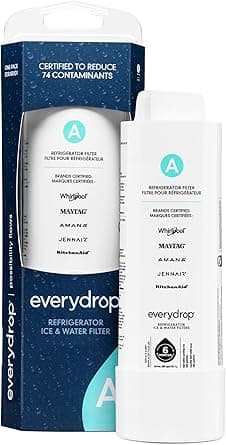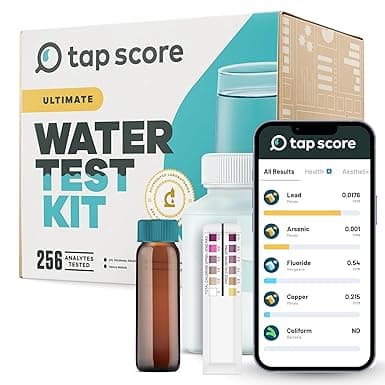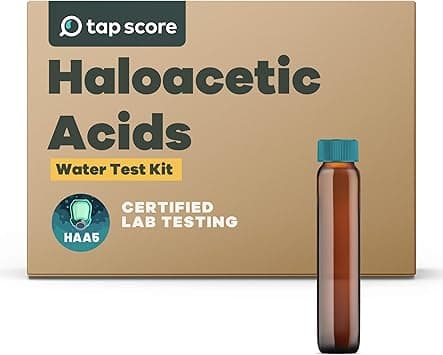Decatur Tap Water Quality Report
Decatur's water has 9 contaminants above EPA MCLGs. We recommend using a certified water filter.
Utility
DECATUR WATERWORKS
People Served
2,383
MCL Violations
0
Last Updated
Apr 28, 2022
Is Decatur Tap Water Safe to Drink?
Decatur's water has 9 contaminants above EPA health-based guidelines. We strongly recommend using a certified water filter to reduce exposure to these contaminants. Check our filter recommendations below for NSF-certified options that can remove the specific contaminants found in Decatur's water.
The data below shows test results from DECATUR WATERWORKS, which serves 2,383 people in the Decatur area. Water quality testing is conducted regularly and reported to the EPA. This report was last updated Apr 28, 2022.
Decatur Water Quality Test Results
Key Water Quality Metrics
Contaminants Detected
⚠️ Contaminants Above EPA MCLG (9)
Bromodichloromethane
What is Bromodichloromethane?
Member of trihalomethanes (THMs) that form in water treated with chlorine
Health Effects
Health protective benchmarks for BDCM are based on carcinogenicity and liver toxicity observed in animal studies. The EPA has classified BDCM as a probable human carcinogen. Results from animal studies also suggest that kidney, immune system, spleen, and developmental toxicity are associated with exposure to BDCM. BDCM has been shown to produce DNA changes (genotoxicity) in laboratory studies.
Affected Organs
Common Sources
Dichloroacetic Acid (DCA)
What is Dichloroacetic Acid (DCA)?
Member of haloacetic acids (HAAs) that form as byproducts when chlorine reacts with organic matter
Health Effects
Health protective benchmarks for DCA are based on evidence of increased cancer risk and liver toxicity observed in animal studies. Adverse effects to the male reproductive system have also been associated with elevated levels of DCA in animal studies. The EPA classifies DCA as a likely human carcinogen.
Affected Organs
Common Sources
Gross Alpha Activity
What is Gross Alpha Activity?
Gross alpha activity measures the total amount of radioactivity in a water sample emitted by decaying alpha-emitting elements, notably radioactive isotopes of uranium, radium, and radon. Alpha emitters are used to treat cancer, as an eliminator of static in paper mills and in other products like smoke detectors. Radioactive atoms release high energy alpha particles that pull electrons off of the atoms in cells. This process is called ionizing radiation, and may lead to harmful changes in cells and tissues. The toxicity of an alpha emitter depends on the amount of energy it releases and how organ systems respond to that energy. Exposure to elevated gross alpha activity is associated with increased cancer risk and genotoxicity, but toxicity to individual systems is dependent on the type of alpha emitter present.
Health Effects
Drinking water standards for gross alpha activity have been developed based on increased cancer risk associated with alpha radioactivity. Alpha radiation has been shown to produce DNA changes (genotoxicity) in laboratory studies.
Affected Organs
Common Sources
DCPA acid metabolites
What is DCPA acid metabolites?
DCPA (Dichloroacetic acid) is a herbicide that is used to control weeds in various crops. It is a chlorinated compound that can break down into several metabolites, which may also be present in drinking water.
Health Effects
Exposure to DCPA and its metabolites can lead to various health issues, including potential carcinogenic effects, reproductive toxicity, and developmental effects. Long-term exposure may affect the liver and kidneys.
Affected Organs
Common Sources
Trichloroacetic Acid (TCA)
What is Trichloroacetic Acid (TCA)?
Member of haloacetic acids (HAAs) that form as byproducts when chlorine reacts with organic matter
Health Effects
Health protective benchmarks for TCA in drinking water have been developed based on liver toxicity and carcinogenicity observed in animal studies. EPA has classified TCA as a possible human carcinogen. Developmental toxicity has also been associated with exposure to TCA based on evidence from animal studies.
Affected Organs
Common Sources
Chloroform
What is Chloroform?
Member of trihalomethanes (THMs) that form in water treated with chlorine and is generally the most abundant THM formed in drinking water
Health Effects
Health protective benchmarks for chloroform have been developed based on kidney and liver carcinogenicity observed in animal studies, and liver toxicity observed in occupational studies. The EPA classifies chloroform as a probable human carcinogen based on animal evidence, and there is additional epidemiological evidence that may increase the risk of colon and bladder cancer in humans. Results from animal studies also suggest that exposure to chloroform can cause liver, developmental and immune toxicity. Acute exposure to low levels of chloroform will cause nervous system toxicity.
Affected Organs
Common Sources
Total THMs
What is Total THMs?
Group of contaminants that form in drinking water systems when a disinfectant, typically chlorine, reacts with organic matter
Health Effects
Drinking water standards for total THMs are based on evidence of carcinogenicity in human and animal studies, as well as liver and kidney toxicity observed in animal studies. Individual THMs have been further associated with developmental, immune, spleen, and genotoxicity.
Affected Organs
Common Sources
Cyanide
What is Cyanide?
Cyanide is a chemical compound that contains a carbon atom triple-bonded to a nitrogen atom. It is highly toxic and can exist in various forms, including gaseous hydrogen cyanide and solid cyanide salts. Cyanide is often used in industrial processes, such as mining and electroplating, and can also be found in certain plants and seeds.
Health Effects
Exposure to cyanide can lead to serious health effects, including respiratory failure, cardiac arrest, and death. Symptoms of cyanide poisoning may include headache, dizziness, confusion, and shortness of breath. Chronic exposure can result in neurological damage and other long-term health issues.
Affected Organs
Common Sources
Radium 226
What is Radium 226?
Radium-226 is a radioactive isotope of radium, which is a naturally occurring element found in uranium ores. It is a decay product of uranium-238 and is known for its radioactive properties, emitting alpha particles and gamma radiation.
Health Effects
Exposure to Radium-226 can lead to serious health issues, including an increased risk of bone cancer and other malignancies. It can accumulate in bones and tissues, leading to long-term health effects due to its radioactivity.
Affected Organs
Common Sources
Understanding the Data
This data comes from your local water utility testing. The bar charts compare detected levels against EPA's Maximum Contaminant Level Goal (MCLG). Contaminants above the MCLG are shown by default and may require filtration. All other tested contaminants are within safe levels and can be viewed by expanding the section above.
Recommended Water Filters for Decatur
Based on Decatur's water quality data, these NSF-certified filters are recommended to remove contaminants above EPA MCLGs.

Solventum Purification Inc.
3MRO401
NSF Certified:
Daily Production
11.48 gpd
Removes 15 contaminants:
Arsenic, Barium, Cadmium, Chromium (Total), Chromium (VI) +10 more

Solventum Purification Inc.
3MRO301
NSF Certified:
Daily Production
11.48 gpd
Removes 15 contaminants:
Arsenic, Barium, Cadmium, Chromium (Total), Chromium (VI) +10 more

Whirlpool Corporation
W11256135
NSF Certified:
Capacity
1001 gal
Filter Life
3 mo
Flow Rate
0.7 gpm
Removes 19 contaminants:
1,2 Dichlorobenzene, 1,4 Dichlorobenzene, 2,4-D, Asbestos, Atrazine +14 more

Whirlpool Corporation
W11569861
NSF Certified:
Capacity
1001 gal
Filter Life
3 mo
Flow Rate
0.52 gpm
Removes 22 contaminants:
1,2 Dichlorobenzene, 1,2,4 Trichlorobenzene, 1,4 Dichlorobenzene, 2,4-D, Asbestos +17 more
Verify Your Water Quality with Independent Testing
With 9 contaminants above EPA health guidelines, independent laboratory testing provides a second opinion and can track changes over time.

SimpleLab
Advanced Home Water Test
$369
Most comprehensive home water test including all standard tests plus additional parameters for ultimate peace of mind.

SimpleLab
Standard Home Water Test
$232
Comprehensive water analysis testing over 200 contaminants including bacteria, heavy metals, and chemical compounds.

Tap Score
Haloacetic Acids (HAA9) Test
$275
Tests for disinfection byproducts formed when chlorine reacts with organic matter in water treatment.
Frequently Asked Questions About Decatur Tap Water
Decatur's water has 9 contaminants above EPA MCLGs. We strongly recommend using a certified water filter to reduce exposure to these contaminants. Check our filter recommendations below for NSF-certified options that can remove the specific contaminants found in Decatur's water.